The advantages of building with Cold Formed Steel (CFS) are obvious, it doesn’t burn, it’s the strongest building material pound for pound, and it pretty much lasts forever. The slightly extra up-front cost (when compared to wood) is more than made for by the cost savings in building maintenance and insurance benefits.
One of the best-case scenarios for Cold Formed Steel, or light steel framing (LSF), is a mid-rise structure with a repeating floor plan. Dorms, apartment buildings, offices, assisted living facilities, and storage units are all good candidates. The repeating floor plans in these types of structures reduce the need for large beams that are needed to cover long spans and absorb heavy loads.
Keep reading for a deep dive into 5 of the biggest reasons CFS is the best choice for Mid-Rise, or click the link to request a free design assist, and see how much you could benefit from switching to CFS: https://steelnetwork.com/Contact
1. Fire Resistant
Non-Combustible:
CFS does not contain any ingredients that contribute to fire and is therefore non-combustible. Not only does it not burn, but the melting point is 2700 degrees Fahrenheit compared to the ignition point of wood, which is 400-500 degrees.
Insurance Benefits:
Construction companies are able to save a fortune on builder’s insurance when using steel as opposed to wood, and building owners are able to save thousands on property insurance every year. Why are steel buildings less expensive to insure? One of the biggest reasons is that wood buildings are much more susceptible to fire, especially during the construction phase, before fire proofing materials are in place.
The owners of an apartment building in Raleigh, NC know this all too well. On March 16, 2017, what started as a small fire on the second floor, escalated quickly, and within 10 minutes, the entire building was engulfed. By morning there was nothing left of the building except for the concrete stair towers.
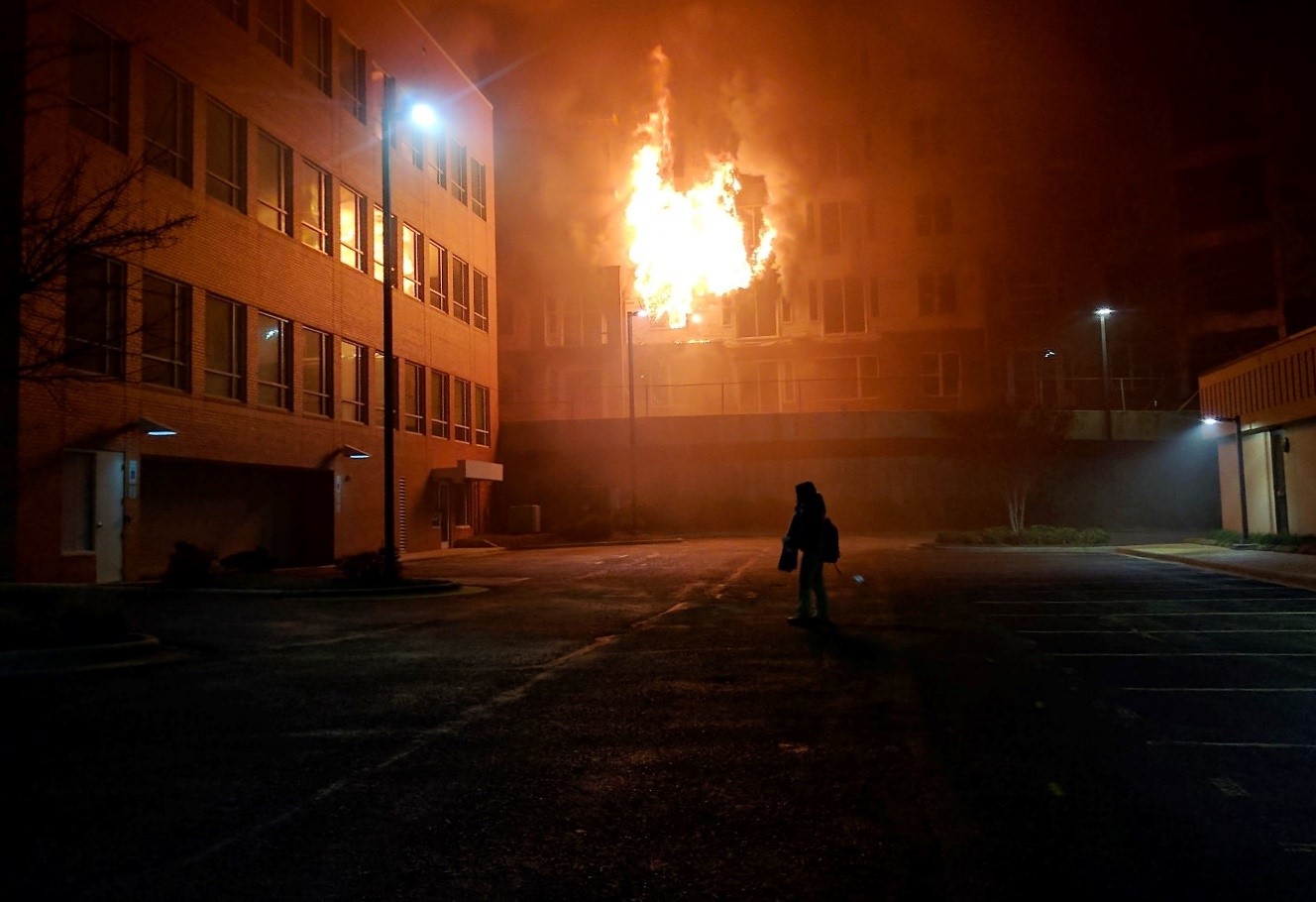
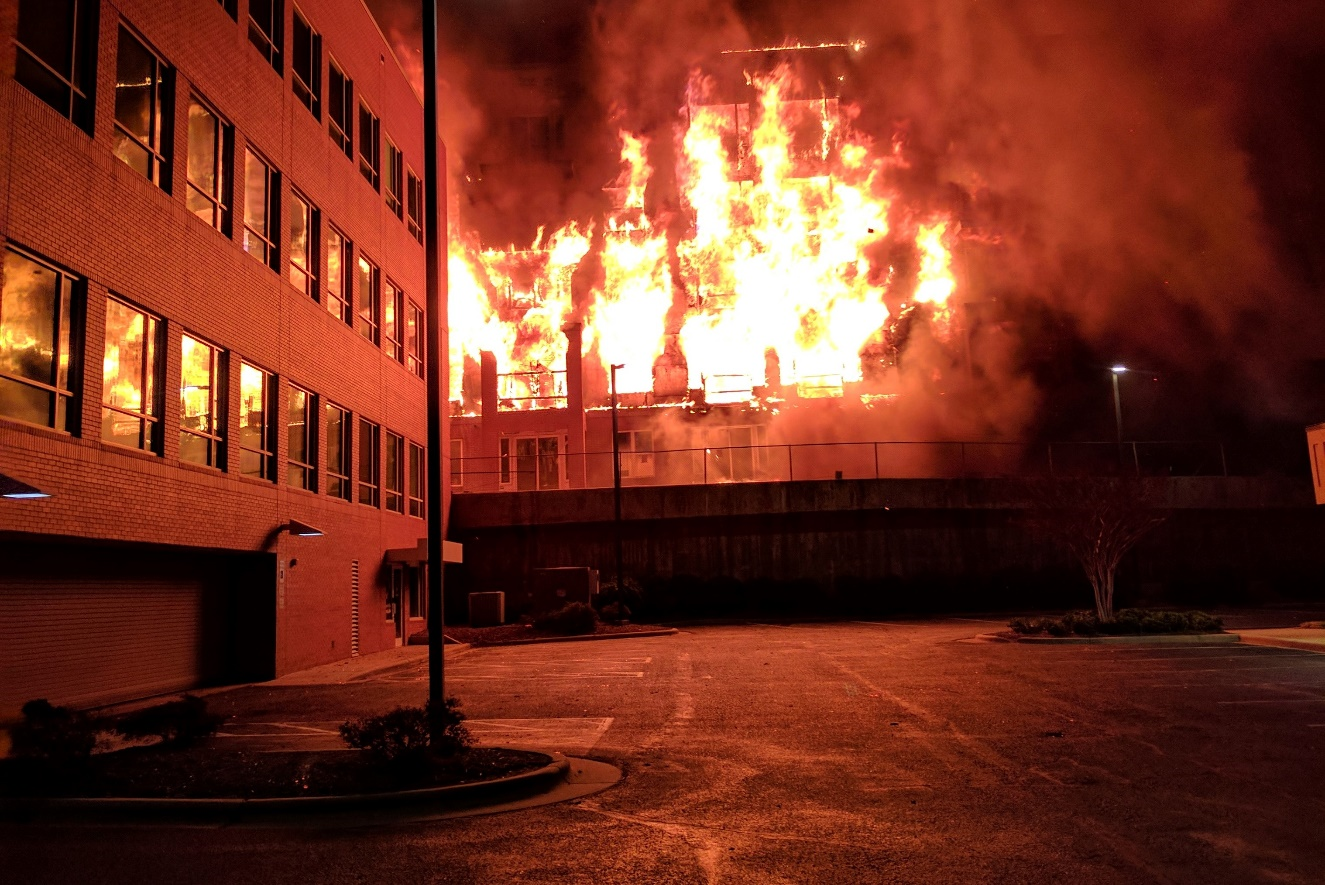
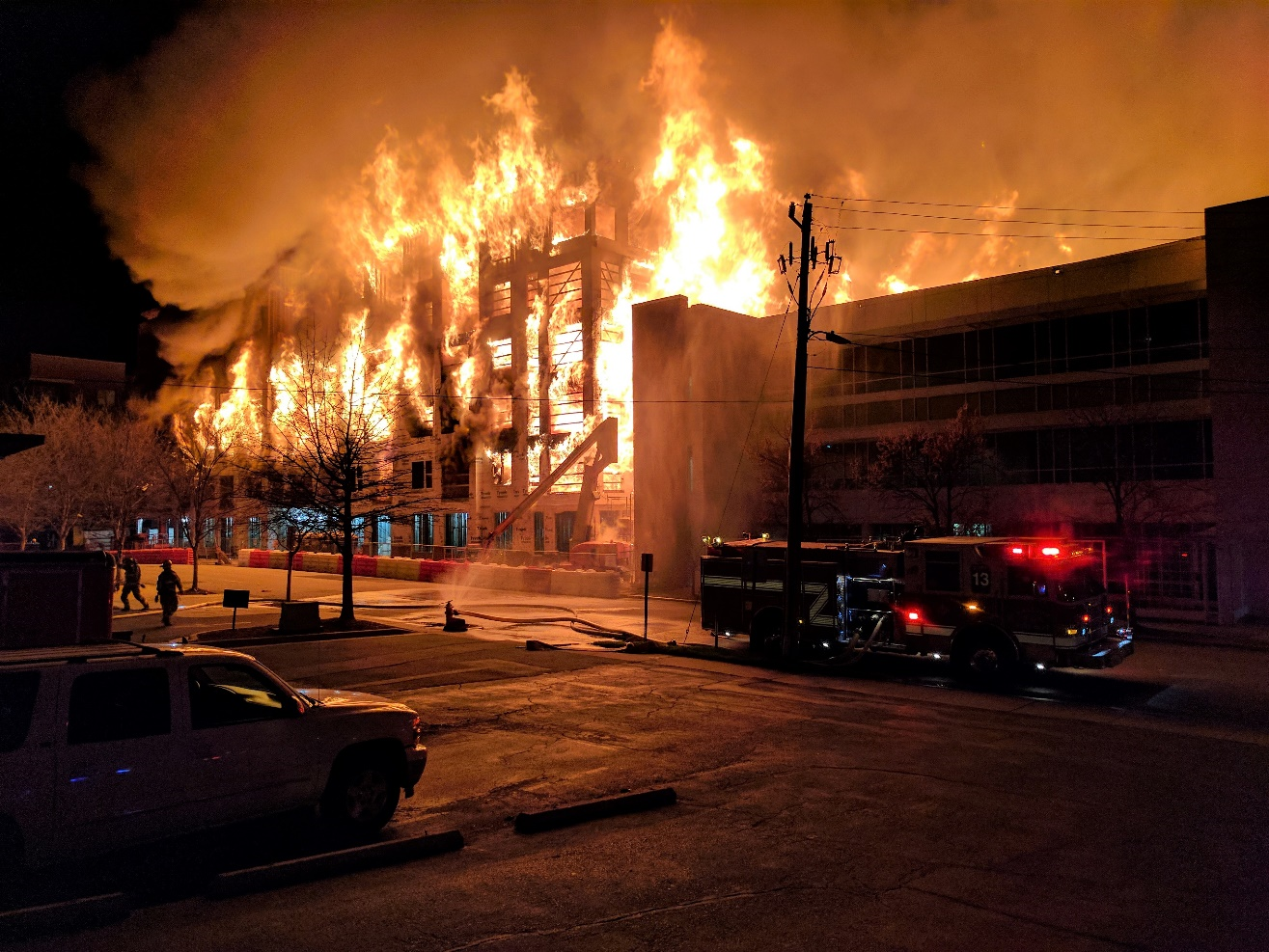
2. Durability
Resists Termites & Pests:
Termites and other pests represent a significant threat to the long-term resilience of buildings throughout most of the United States. CFS is one of the few materials that can resist termites, carpenter ants, flying ants, powderpost beetles, and carpenter bees.
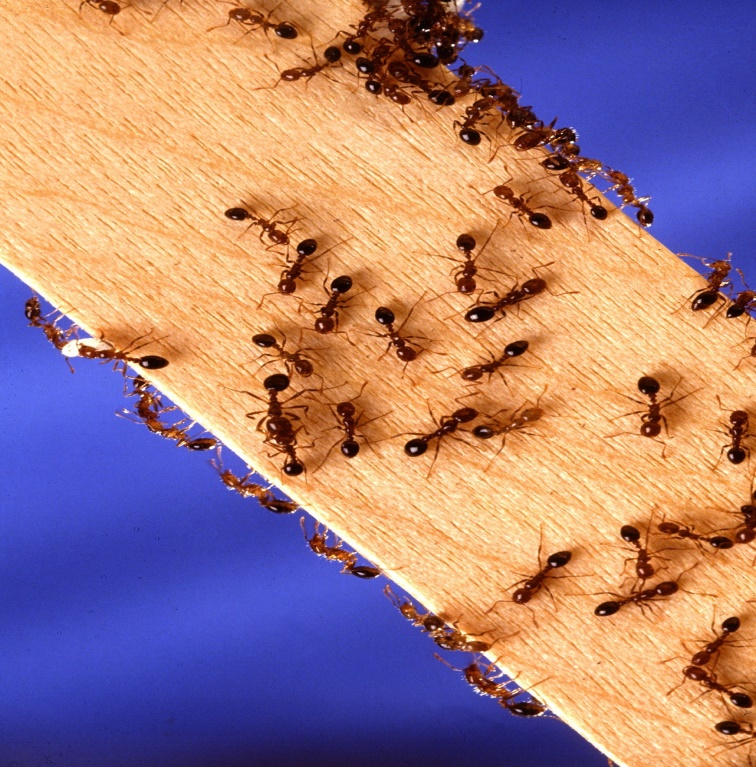
Longevity:
Some of the biggest dangers to wood structures are mold, rot, and mildew. Unlike wood framing, cold-formed steel is inorganic and does not retain water, therefore making it impervious any of these threats.
One of the only potential weaknesses of steel as a building material is corrosion. To battle this, all Cold Formed Steel is coated with zinc. This protective barrier will last nearly 700 years before the level of corrosion resistance deteriorates. CFS is clearly a great option when it comes to durability.
3. Efficiency
Strength:
Steel is stronger pound for pound than any other building material. This strength allows Architects and Engineers a high degree of flexibility and more artistic license in the design process. The result is a beautiful building that both the designers and owner can be proud of.
Light Weight:
Because Cold Formed Steel is so much lighter than other types of building materials, it is possible to significantly reduce the bearing weight of the building. Designers of the Hilton Garden Inn in Durham, NC were able to reduce bearing weight by 80% using Sigma Stud as opposed to the much more cumbersome 45psf concrete material that was originally on the job. This reduction in weight allowed for a less robust foundation and ultimately a substantial cost savings.
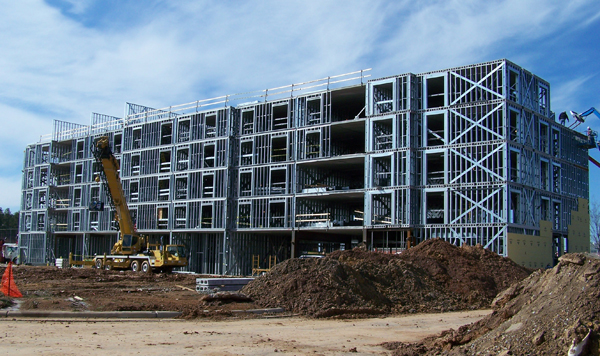
4. Performance During Earthquakes & Extreme Events
Positive Mechanical Attachment
Metal studs are attached to the frame using positive mechanical attachment, which greatly increases strength and makes steel structures more resilient toward high winds, earthquakes, and natural disasters. It is for this reason that metal schools, churches, and municipal buildings are likely to be designated for evacuation structures in climates that are susceptible to tornadoes or hurricanes.
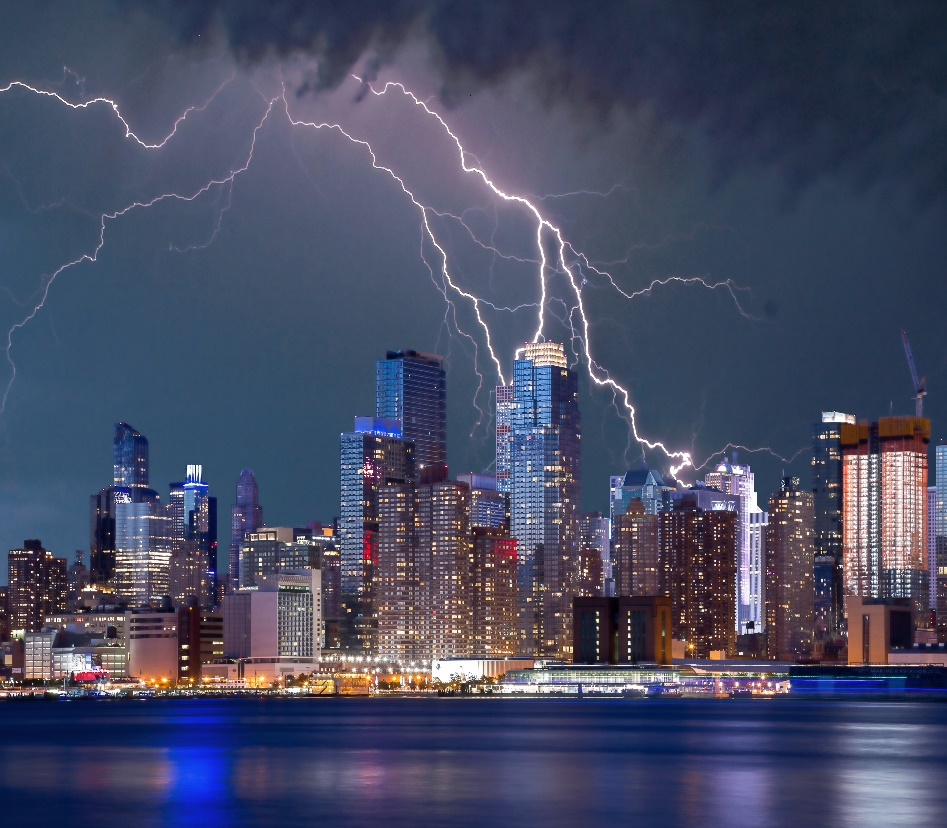
Drift Capabilities:
In the last several years, seismic codes have become more and more stringent, especially on the West Coast where earthquakes are common. Manufacturers responded and created several innovative systems to handle drift. As a result of this innovation, steel is now considered one of the most capable building systems when it comes to handling seismic forces.
5. Sustainable
Recycle:
One obvious advantage of steel vs. wood is that steel is much easier to recycle. Recycling wood building materials can be an arduous process that many time proves to be more trouble than it’s worth, whereas recycling steel is a fairly straight forward and efficient process.
Not only is steel easy to recycle, it can be infinitely recycled. Steel is one of the most recyclable building materials available for construction; in fact, 65 million tons of steel are recycled annually, and steel coils used by manufacturers typically contain a minimum of 25 percent recycled material.
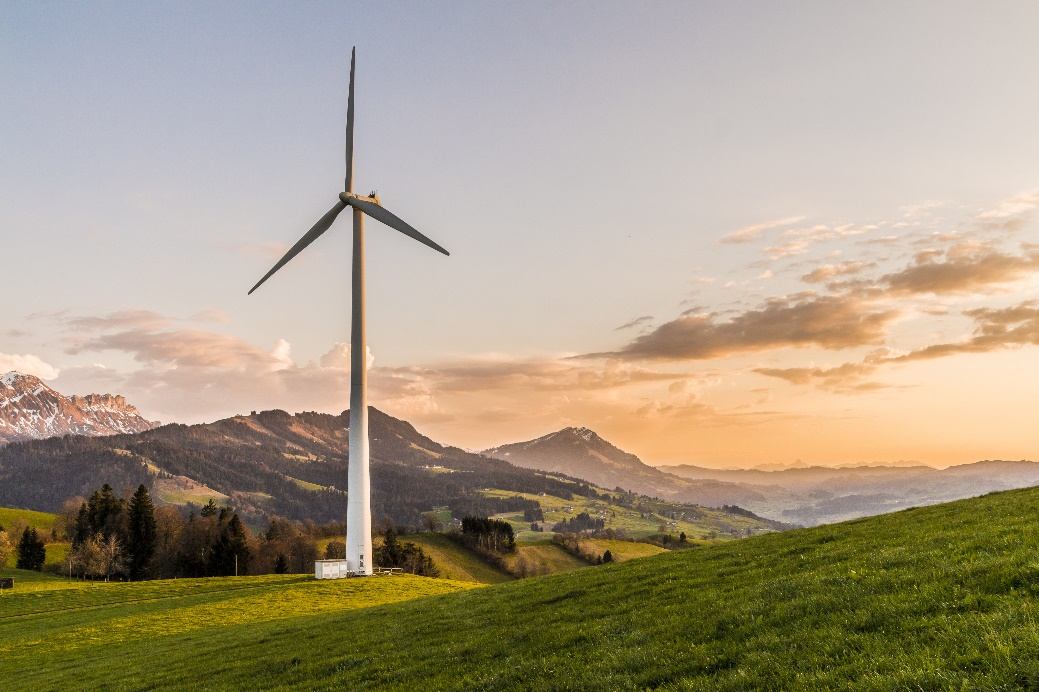
Conclusion:
Steel is here to stay in the mid-rise market, and it is being looked on more and more favorably by officials responsible for the building code. In some states, there has been serious discussions about limiting the use of wood in mid-rise in favor of Cold Formed Steel. Forward thinking legislation such as Maryland-2017-HB1311 and Maryland-2017-SBSB722 have recently attempted thttps://steelnetwork.com/wp-content/uploads/2021/01/maryland-2017-hb1311-introduced.pdfo do just that.
If you are thinking of designing your next project in steel, let us know, and we will see if making the switch to Steel makes sense. To help you make this decision, we offer a free service called a Design Assist. A Design Assist essentially provides you a report that is one step below shop drawings. It shows you our recommendations from a design standpoint, and allows you to determine if steel could be a better option than wood for your project.
